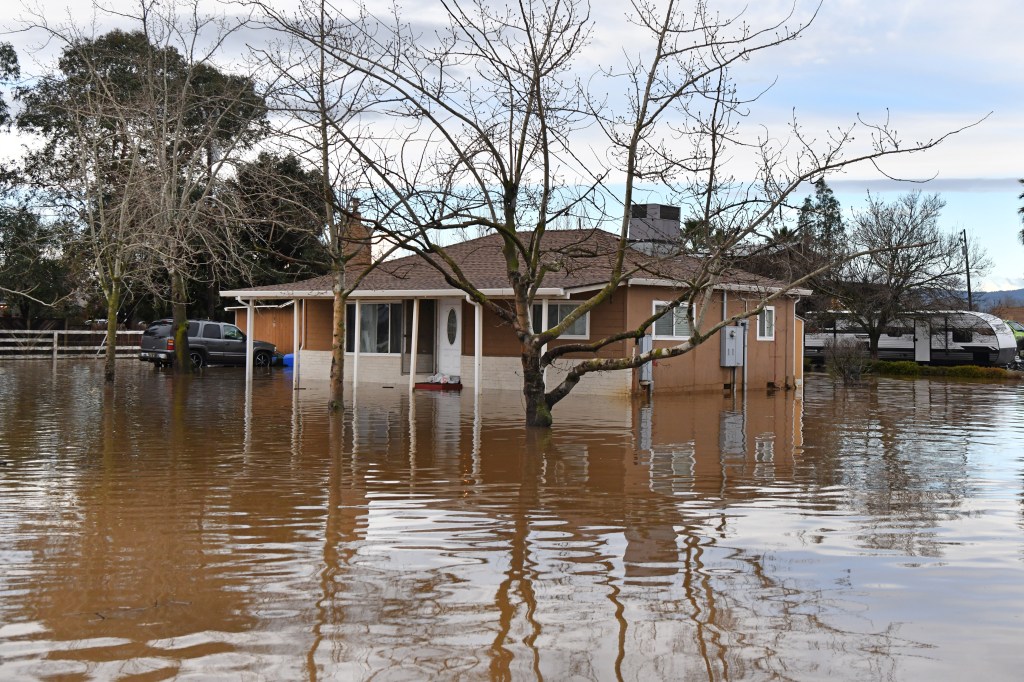On the Federal Emergency Management Agency’s hazard map, the landscape of the U.S. is color-coded to illustrate different levels of danger from extreme weather.
Several Bay Area counties are shaded dark red, the highest level of risk. They’re considered to be even more in peril than the communities recently devastated by Hurricane Helene, which are still rated a less ominous light blue. In fact, five of the Bay Area’s nine counties are in the 99th percentile for natural disaster risks, according to the agency — ranked in the top 15 out of all 3,007 counties in the country.
Alameda, Santa Clara and Contra Costa counties are facing the 4th, 5th and 8th highest risk within California, respectively. Now, one county is taking steps to ensure its residents are better protected.

The county’s 2024 Hazard Mitigation Plan is an attempt to prepare for possible disaster — an in-depth report identifying every possible susceptibility, including the three biggest natural hazards looming in the East Bay: earthquakes, wildfires and landslides triggered by severe storms.
That destructive power was on full display last winter when atmospheric rivers relentlessly drenched California with torrential rainfall, triggering the first significant flooding, landslide and mudslide events reported in Contra Costa County since 2017. As global average temperatures rise, scientists project that the frequency and intensity of severe storms will increase.
The county’s 520-page document, revamped every five years, also charts dozens of mitigation strategies for local officials to help protect its 1.1 million residents against any future calamities.
“This is the soapbox for emergency planners — our strategies have to be how are we going to respond and build resiliency and mitigation to lessen those impacts,” Kovar said. “This is just the road map that tells us how we need to be doing that.”

However, one major vulnerability looms amid these planning efforts: the county’s Office of Emergency Services, which is overseen by the Sheriff’s Office, currently has only four full-time emergency management positions and three staffers that plan, organize and maintain the Community Warning System — one of the most glaring concerns identified in a recent civil grand jury report criticizing inadequate alert protocols. That roster pales in comparison to the 21 approved positions in Alameda County and 29 personnel in Santa Clara County, as well as the 17 emergency managers working in nearby Sonoma County, which is half the size of Contra Costa.
County Administrator Monica Nino said that while officials are exploring ways to integrate AI and other tech to help supplement disaster responses, additional resources will prove vital in the large, urban region where the number of households is projected to grow by 44% by 2050.
“There is a lot of heavy lifting among those folks, but that doesn’t even include our sheriff’s leadership team that is fully engaged in this effort,” Nino said, adding that the Board of Supervisors is slated to consider funding for an external study of its internal emergency management functions on Nov. 12. “It will be important that we look at the organizational structure, because a lot gets done with a smaller, mighty team.”
While that staffing study is still ongoing, FEMA and the California Governor’s Office of Emergency Services in late September approved the county’s base plan, as well as a report for the Diablo Water District, which is a requirement to be eligible for the next round of non-emergency disaster funding for mitigation projects, according to Beatriz Portillo, a senior emergency planning coordinator.
In order to meet final deadlines in January, Contra Costa County now hopes to complete and resubmit its entire plan for final approval by the end of the month.
FEMA approved Santa Clara County’s multi-jurisdictional hazard mitigation plan in February, while Alameda County’s current five-year plan got the greenlight in March 2022.
Contra Costa County faces a staggering $575 million in potential economic losses, according to the county’s Hazard Mitigation Plan, when tallying up the estimated average annual damage that earthquakes, wildfires, coastal flooding and heat waves may unleash on residential homes, commercial buildings and connective infrastructure, such as roads, railroads and utility lines. These multimillion-dollar figures do not fully account for factors such as business interruption, resident displacement or long-term environmental impacts.
Elena Givental, an adjunct professor of anthropology, geography and environmental studies at Cal State East Bay, said the county’s approach is the best way for local authorities to move forward, but she’s not sure that means the area is well prepared — due to infrequent events like earthquakes, as well as fluctuations between El Nino/La Nina climate patterns, which cause Bay Area weather to be either above or below average.
That’s why she argues that education is even more pressing for individual households to protect themselves, regardless of what natural disaster strikes first.
“Human nature is such that if (a natural disaster) doesn’t repeat itself, then it’s as if it never happened,” Givental said. “It’s really difficult to keep all this information in mind and pay attention to everything, but I do believe that scaring people a little bit while giving them good tips on how to behave is probably the best way to warn residents — explaining why they should be scared.”


















































